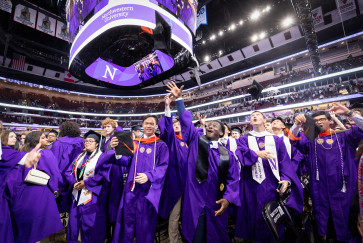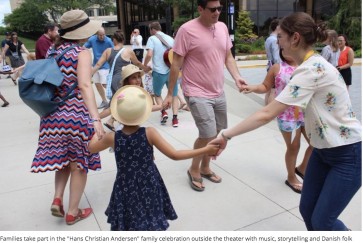EVANSTON, Ill. --- When students from low socioeconomic status (SES) backgrounds perceive their universities to be “chilly” towards students from their backgrounds, their academic confidence and sense of themselves as high-achievers suffers, according to a new series of Northwestern University studies.
Students perceived their universities as “warm” versus “chilly” depending on whether and how the institutions focused on socioeconomic diversity. When exposed to messages that suggested a commitment to promoting and supporting socioeconomic diversity, low-SES students reported greater academic confidence and expectations and identified more strongly as high-achievers than those who received messages that neglected socioeconomic diversity or focused more on higher-income students.
“While providing adequate financial resources is unquestionably important, our work suggests that the way such policies are presented can have important implications for these students’ psychological outcomes at college,” said Alexander Browman, lead author of the studies and a doctoral student in psychology in the Weinberg College of Arts and Sciences at Northwestern.
Recognition of the difficulties low-SES students face when trying to finance a university education has increased in recent years. Many universities, for example, have publicized their efforts to increase admissions for low-SES students by raising the family income level that qualifies for financial aid or even tuition-free admission.
But even a university’s efforts to communicate such policies can be perceived as dismissive of low-SES students’ needs when the message also emphasizes, for example, that “only half of our students require financial aid,” as the authors found.
“I’m sure the institutions believe that these types of messages are going to have positive effects for all the families -- for the low-SES students and their families and for the other members of the university community,” said Mesmin Destin, senior author of the studies and assistant professor of human development and social policy in the School of Education and Social Policy and of psychology in Weinberg.
“But such messaging can appear to low-SES students as a signal that the institution is more focused on wealthier students,” said Destin, also a faculty fellow at the University’s Institute for Policy Research.
Students in three studies were randomly assigned to see “warm” promotional statements about their school that suggested the university was committed to supporting socioeconomic diversity. They were presented, for example, with explicit statements showing a university’s commitment to financial aid and the federal work-study program.
Another group of students was exposed to “chilly” promotional statements that suggested that their university was focused on serving wealthier families as opposed to a socioeconomically diverse range of students and families. For example, the statements focused on the lack of students on campus that needed financial aid or about how much the institution benefited from wealthier families’ financial contributions.
The researchers found that low-SES students demonstrated greater academic confidence and expectations and identified more strongly as high-achievers when they perceived their institution as warm, versus chilly, towards socioeconomic diversity.
“Efforts to find more support for low-SES students are invaluable,” Browman said. “But schools also need to consider how the language they use in their messages can affect students.”
“The Effects of a Warm or Chilly Climate Towards Socioeconomic Diversity on Academic Motivation and Self-Concept” was recently published online in Personality and Social Psychology Bulletin and will appear in an upcoming print issue.

